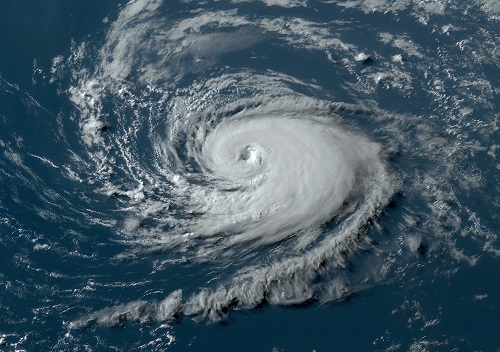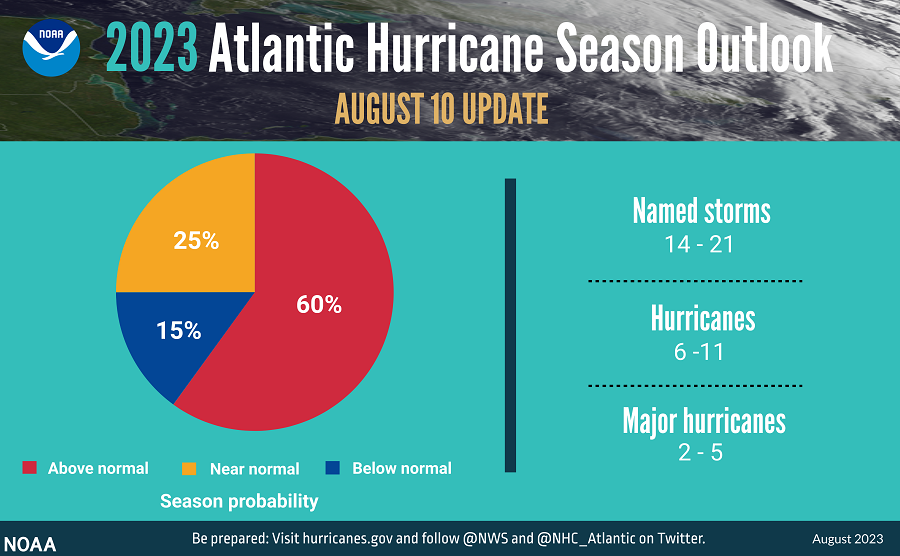After releasing forecasts earlier this May, the National Oceanic and Atmospheric Administration (NOAA) has increased its predictions for the ongoing 2023 Atlantic hurricane season. The agency has upgraded its expectation from a “near-normal” level of activity to an “above-normal” level, with up to 11 hurricanes predicted this year.

Forecasters believe that current ocean and atmospheric conditions, such as record-warm Atlantic sea surface temperatures, are likely to counterbalance the usually limiting atmospheric conditions associated with the ongoing El Nino event.
Matthew Rosencrans, lead hurricane season forecaster with NOAA’s Climate Prediction Center, said, “Considering those factors, the updated outlook calls for more activity, so we urge everyone to prepare now for the continuing season.”
NOAA’s 2023 outlook covers the entire six-month hurricane season that started on June 1 and ends Nov. 30. The updated forecast now calls for 14-21 named storms (winds of 39 mph or greater), including 6-11 hurricanes (winds of 74 mph or greater). Up to 5 of these potential hurricanes are forecast to be “major hurricanes,” with winds of 111 mph or greater.
NOAA provides these updated ranges with a 70% confidence, noting they include storms that have already formed this season.
The Atlantic basin experienced an active start to the hurricane season with five storms that have reached at least tropical storm strength, including one hurricane already. An average hurricane season produces 14 named storms, of which 7 become hurricanes, including 3 major hurricanes.

NOAA notes hurricane outlooks are forecasts of overall season activity, not landfalls. A storm’s landfall is typically predictable within roughly one week of a storm approaching a landmass. The agency urges everyone in vulnerable areas to have a well-thought-out hurricane plan and stay informed through official channels as this season progresses.
